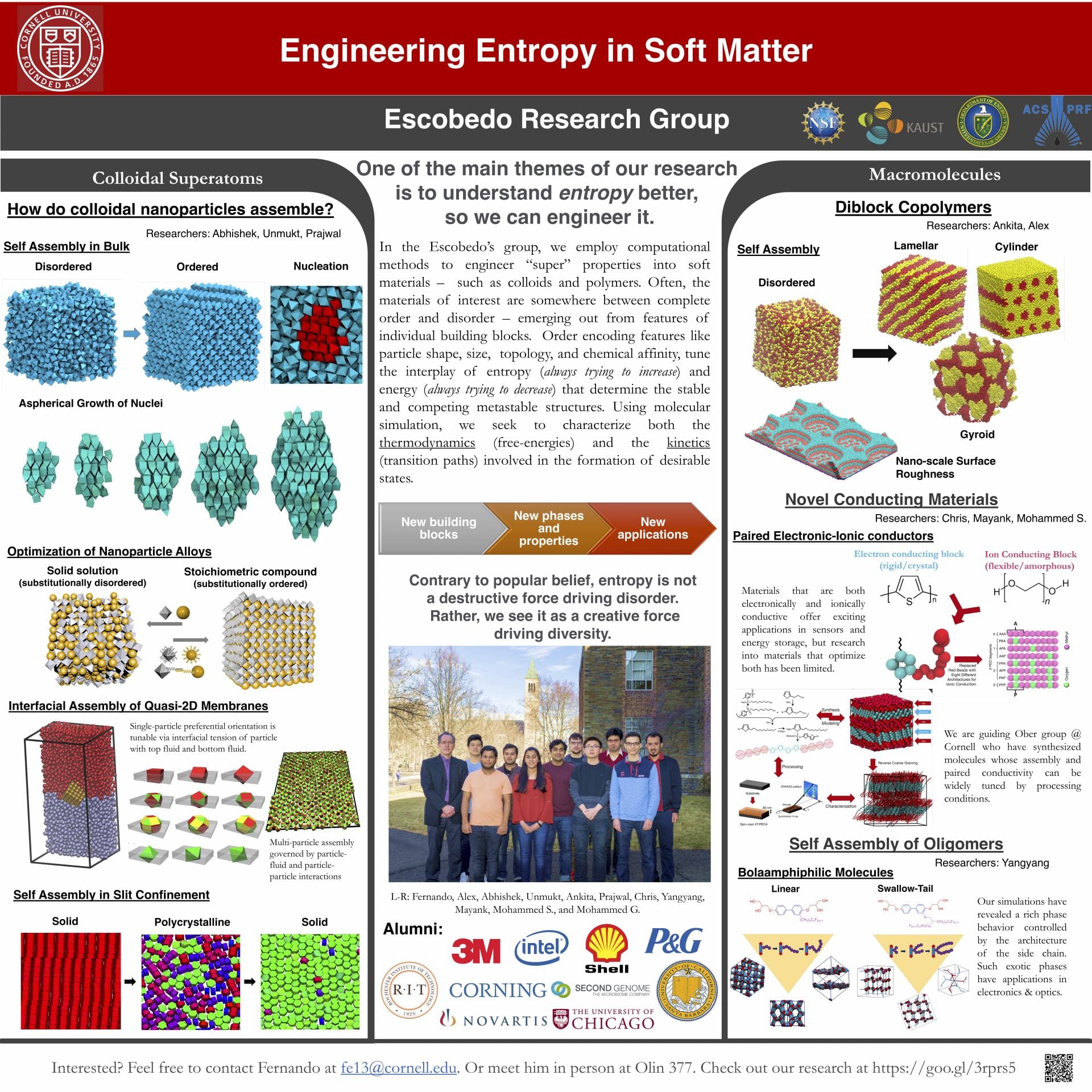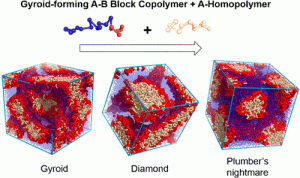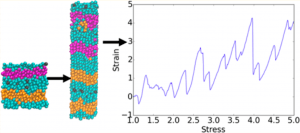Within the broad theme of “Engineering Entropy and Order in Nanomaterials via Molecular Simulation”, the types of materials that have been studied can be classified into colloids and polymers.
Colloidal suspensions: We have shown, for example, that nanoparticles of various geometrical shapes (like having polyhedral shape or rigid and flexible parts) self-assemble into liquid crystalline and plastic solids that either are new or confirm recent experimental observations. Such phases have potential uses in materials involving light matter interactions (such as photonic band-gap materials and superlattices for solar cells).
Polymers: We have studied the thermodynamic and conformational behavior of many polymeric systems have been studied, from single chains to melts to networks, from fully flexible to rod-like molecules, from bulk to nanopore confinement, and from homopolymers to block copolymers to proteins. In the case of diblock copolymers, one key contribution has been to understand the conditions under which bicontinuous structures (which are ideal templates to create structures of large surface area and uniform nanosized pores, for use in certain types of solar cells and membranes). Our group was the first to simulate (using particle-based simulations) the gyroid phase in a pure diblock copolymer melt and the so-called “plumber’s nightmare phase” in blends of diblock copolymers and homopolymers.
Within polymer networks (elastomers), we have elucidated the effect on the tensile behavior, swelling, and toughness (total energy absorbed before break-up) of such structural features as permanently trapped entanglements, temporary chain interspersion, inhomogeneities in crosslinking (e.g., brought about by chains of different molecular weights), order (e.g., due to alignment tendencies of semiflexible chains), and topological regularity and defects.
An emerging area of interest has been dual conducting materials which can conduct ionically as well as electronically. This leverages many aspects of the groups pervious work in rod-like polymers, the self-assembly of these molecules, as well as the conformational dynamics of the system which allow for the conduction of ions and electrons.
Regarding simulation methods, our contributions have concentrated on developing new techniques to quantify the thermodynamics (e.g., via expanded ensembles) and kinetics (e.g., via forward flux sampling) of the polymeric and colloidal systems of interest in situations where components are complex, have large asymmetries or where size polydispersity exists. In particular, these methods have allowed us to detail how transitions occur between two states of a system or between two phases with different degrees or order (e.g., between conformers of a protein or between a liquid and a solid).








